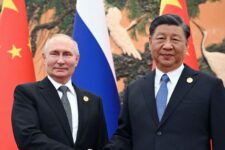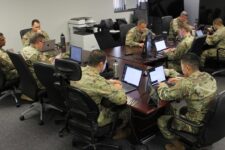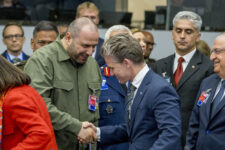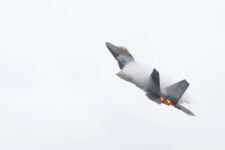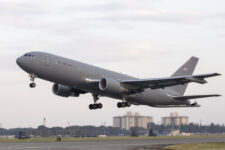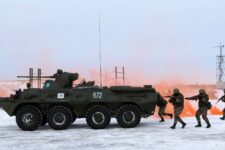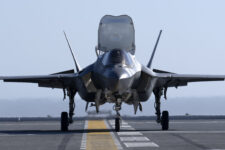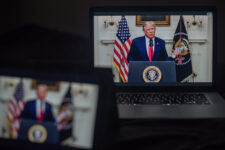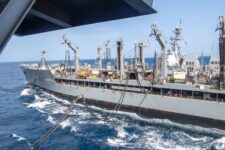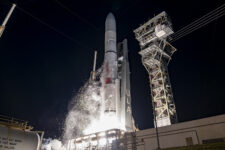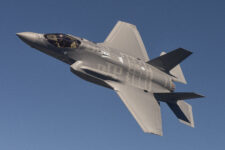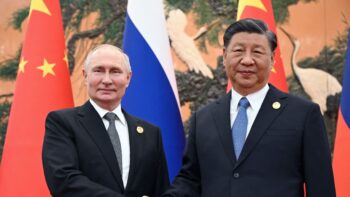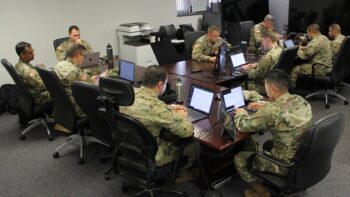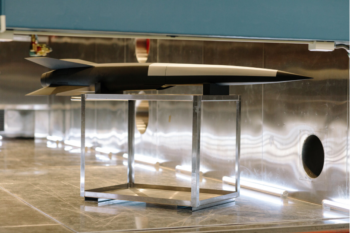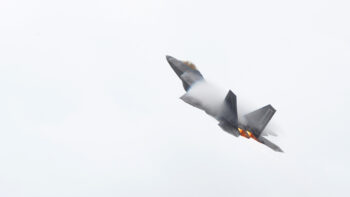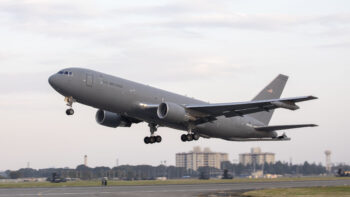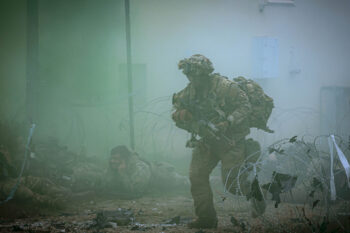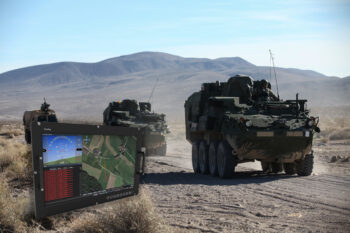
Call it Somalia on steroids. Call it Syria next week. Either way it’s a scenario the US military needs to prepare for: an intervention into a failing state where rival factions have looted a sophisticated arsenal, from tanks to shoulder-fired anti-aircraft missiles to weapons of mass destruction.
There’s no political will in Washington to intervene (directly) in the Syrian conflict as it now stands. The military cost of breaking down Syria’s defenses outweighs the political benefit of stopping the killings. But if the Assad regime imploded — and it’s under greater pressure ever day — that equation would change: The Syrian defenses would become less coordinated and formidable, though still dangerous, while the pressure on the US to act, if only to secure the regime’s chemical weapons, would rise sharply.
A similar but even uglier calculus would play out if the young Kim Jong Eun’s regime collapsed in North Korea, which after all has nuclear arms. Such a conflict, a form of what’s often called “hybrid warfare,” would combine the multi-sided messiness of an Afghanistan or Iraq with an arsenal of powerful weapons. It’s a highly lethal kind of chaos which is sufficiently different from either post-9/11 counterinsurgency — which has consumed the Army and Marines — or a future “AirSea Battle” against China or Iran — which preoccupies the Air Force and Navy — that it demands special attention.
“These are problems that are certainly under-recognized in the current defense strategy,” said Nathan Freier, a retired Army lieutenant colonel and Iraq veteran who now works at the Center for Strategic and International Studies and has written on strategy for Breaking Defense.
“Rewind the clock back to Somalia in the early ’90s,” Freier said. “That battlespace was lethal enough with AK-47s and RPGs [rocket-propelled grenades]. Imagine circumstances where the failed state is somebody who’s been amassing relatively sophisticated military hardware for decades,” he told Breaking Defense. “A US intervention for very limited objectives — we’re not even talking about putting Humpty Dumpty back together again — [might] in certain circumstances be considered almost unavoidable.”
What could a Syrian collapse unleash? So far, “the chemical weapons are under pretty tight control,” said Jeffrey White, who spent decades as a Mideast specialist at the Defense Intelligence Agency before joining the Washington Institute for Near East Policy. “But in the chaos of the breakdown of the regime and the military command structure, people could just walk away from storage areas, just leave them [unguarded]. So it’d be important for somebody to come in and police them up.”
“We know how to do those kinds of things but it would be tricky,” White said. “There’d be no way to really be sure what kind of situation you’d find on the ground.”
The most straightforward scenario for a Syrian collapse would be de facto partition, with the coastal regions dominated by the Allawi minority — the regime’s main supporters — breaking away from the Sunni Arab provinces inland. “That would be fairly clear-cut,” said White. But Damascus lies outside the hypothetical “Allawi-stan,” and White doubts the regime would be willing to give up the capital and retreat to the coast: “What I think is more likely is the regime will fight for Damascus as long as it can, and when that falls it will be a matter of flight, every man for himself.”
In that event, the Syrian army and security forces would splinter. Allawis dominate the intelligence services, a few elite units like the Republican guard, and the shabiha militia, but they’re spread thin across most of the army, which is largely by increasingly reluctant Sunni conscripts. “I doubt if any Allawi officers would be staying around because their hands are almost all dirty [in the repression],” said White, “so you have a bunch of guys with guns without leaders.” Some might defect to local rebel leaders, some might just go home — with or without their guns — and some might start looting.
The upside of intervening into a state in collapse, as opposed to one in full command of its forces, is that complex systems requiring large-scale coordination and specialist personnel would probably not be functioning. “You don’t just drive up in your Scud launcher and fire it: It takes someone who’s trained,” said White. Likewise, he said, “the air defense system would be somewhat or largely disabled; people would be not manning the radars or the missile batteries.”
The downside is that whatever weapons remain could be in all sorts of unknown hands. “There’s lots of MANPADs [shoulder-launched anti-aircraft missiles], including fairly sophisticated ones like the SA-24,” said White. “They’re issued down to the battalion level,” which would put them under control of dozens of relatively junior commanders. In general, White went on, “there’d just be huge amount of conventional arms available, and there are a lot of people how know how to operate tanks and artillery.”
In an intervention against a hostile nation-state, the crucial question would be where those weapons are and how to target them. In an intervention into chaos, there’s the added dimension of know who currently controls them and what their intentions are. Will they welcome US forces? Shoot at them? Stay neutral? And how can the US conduct the intervention to minimize the number of factions that oppose it? Just going in guns blazing might be safest in the short run but guarantees making enemies for tomorrow.
“It puts a huge premium on good intelligence,” said White. “Knowing where the [chemical weapons] site is isn’t enough….You need to know who’s there and what they’re doing.”
A regime collapse in North Korea is an even more nightmarish scenario. “I’m frankly more worried about collapse than I am about war,” said David Maxwell, a retired Special Forces colonel with extensive experience in Korea, now associate director of Georgetown University’s Center for Security Studies. Another North Korean invasion of the South is the devil we know and have beaten before. “If war comes it’ll be bad, but the outcome is not in doubt,” Maxwell went on. “Collapse could be more complex in many ways but just as brutal and bloody.”
If the regime in Pyongyang loses control of its field forces, “you’re going to have factions of military leaders… fighting for survival,” Maxwell said. “You have corps commanders out there who have weapons of mass destruction; they have access to ‘Department 39,’ which is their global network of organized crime,” which gets precious hard currency for the regime by selling everything from drugs to missile technology to bootleg cigarettes. North Korea has massive conventional forces, Maxwell noted, but it invests heavily in special operations units as well, and the founding myth of the regime is Kim Il-sung’s experience (in reality very limited) as a guerrilla fighter against the Japanese in World War II.
Most dangerous of all, any US and South Korean intervention heading north to succor refugees or secure nuclear weapons would have to avoid an accidental collision with the Chinese heading south. “They’re not going to sit idly by,” Maxwell said. “I believe they will cross into North Korea; they will secure the entire border; they will penetrate deep to Pyongyang; they will try to recover [evidence of] their complicity in the nuclear program.”
Coming face to face with Chinese forces amidst the chaos of a North Korean collapse, or encountering Iranian agents and proxies amidst a Syrian one, would be a much messier business than the relatively sterile long-range conflict envisioned by “AirSea Battle” doctrine. “Right now, the entire Defense Department wants to focus on a highly organized, lethal opponent,” said Freier. What he’s more worried about is a threat that’s highly disorganized — and still lethal.
So what does the military need to do differently? “The Army and Marine Corps need to be focused on intervention in conditions of disorder, because they’re eminently postured best to deal with the challenge of human conflict occurring in close proximity to populations,” said Freier. The kind of technical intelligence provided by satellites and drones would not suffice: It would be critical to get human intelligence on the factions’ allegiances and motivations — without the years-long learning curve the US needed to learn the players in Afghanistan and Iraq. How to jumpstart effective understanding of this “human domain” is getting increasing emphasis in Army thinking.
Across the services, “we need to improve our capability for forcible airborne and amphibious entry at multiple points,” Freier went on. “Right now that capability has atrophied substantially over the last ten years.” That kind of 21st century D-Day landing has been a major focus in recent wargames and exercises held by both the Army and the Marines. The simulated results aren’t always pretty.
Intervening into chaos is a distinctly difficult and ugly form of war, one that any policymaker would want to avoid. That doesn’t mean we will always be able to avoid it.
Russia ‘likely’ to transfer submarine tech to China, N. Korea: INDOPACOM Chief
“The idea of driving wedges between” Russia and China, Australia’s director-general of the Office of National Intelligence said, “is fanciful.”
